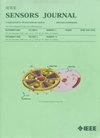An Attention Minimal Gated Unit-Based Causality Analysis Framework for Root Cause Diagnosis of Faults in Nonstationary Industrial Processes
IF 4.3
2区 综合性期刊
Q1 ENGINEERING, ELECTRICAL & ELECTRONIC
引用次数: 0
Abstract
Root cause diagnosis is an important part of the fault diagnosis framework, which is often used to locate the root causes and identify the propagation paths. Most of the traditional root cause diagnosis methods consider the time series of industrial processes to be stationary or nearly stationary after faults occur. Since fault information is often propagated according to the causalities between process variables, and the pseudo-regression caused by nonstationary characteristics is not conducive to correct causality analysis, further affects the root cause diagnosis performance. Associated with those trends, in this article, a new causality analysis framework is proposed for root cause diagnosis of faults in nonstationary industrial processes. Specifically, the augmented Dickey-Fuller (ADF) test is first used to determine the stationarity of the time series, and the combination method of cointegration analysis (CA) and higher order difference is used for extracting the stationarity factors from nonstationary time series. Then, an attention minimal gated unit (AMGU)-based nonlinear dynamic causality analysis method is developed for causal topology construction and root cause diagnosis. Finally, industrial verifications on two datasets from actual hot rolling processes (HRPs) show that the proposed scheme is feasible, and is superior to competitive methods in terms of solving the issues of root cause diagnosis of faults in nonstationary industrial processes.求助全文
约1分钟内获得全文
求助全文
来源期刊

IEEE Sensors Journal
工程技术-工程:电子与电气
CiteScore
7.70
自引率
14.00%
发文量
2058
审稿时长
5.2 months
期刊介绍:
The fields of interest of the IEEE Sensors Journal are the theory, design , fabrication, manufacturing and applications of devices for sensing and transducing physical, chemical and biological phenomena, with emphasis on the electronics and physics aspect of sensors and integrated sensors-actuators. IEEE Sensors Journal deals with the following:
-Sensor Phenomenology, Modelling, and Evaluation
-Sensor Materials, Processing, and Fabrication
-Chemical and Gas Sensors
-Microfluidics and Biosensors
-Optical Sensors
-Physical Sensors: Temperature, Mechanical, Magnetic, and others
-Acoustic and Ultrasonic Sensors
-Sensor Packaging
-Sensor Networks
-Sensor Applications
-Sensor Systems: Signals, Processing, and Interfaces
-Actuators and Sensor Power Systems
-Sensor Signal Processing for high precision and stability (amplification, filtering, linearization, modulation/demodulation) and under harsh conditions (EMC, radiation, humidity, temperature); energy consumption/harvesting
-Sensor Data Processing (soft computing with sensor data, e.g., pattern recognition, machine learning, evolutionary computation; sensor data fusion, processing of wave e.g., electromagnetic and acoustic; and non-wave, e.g., chemical, gravity, particle, thermal, radiative and non-radiative sensor data, detection, estimation and classification based on sensor data)
-Sensors in Industrial Practice
 求助内容:
求助内容: 应助结果提醒方式:
应助结果提醒方式:


